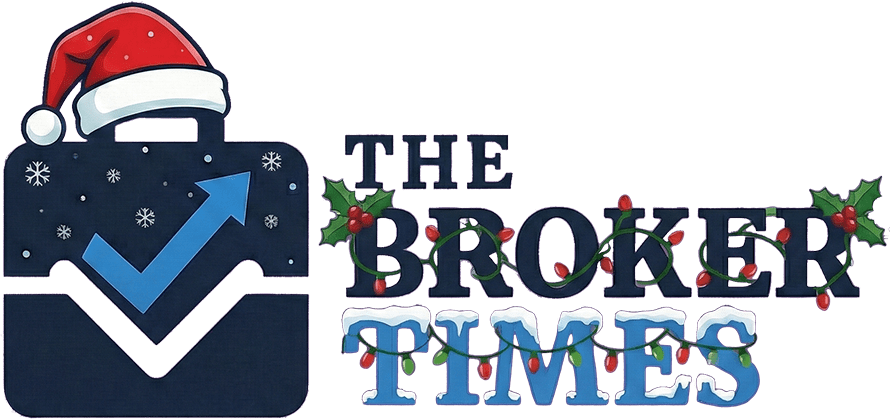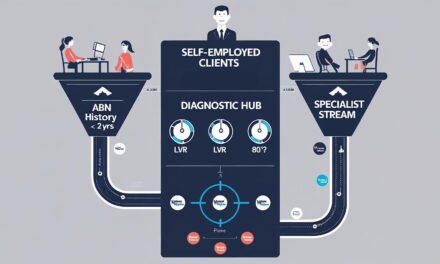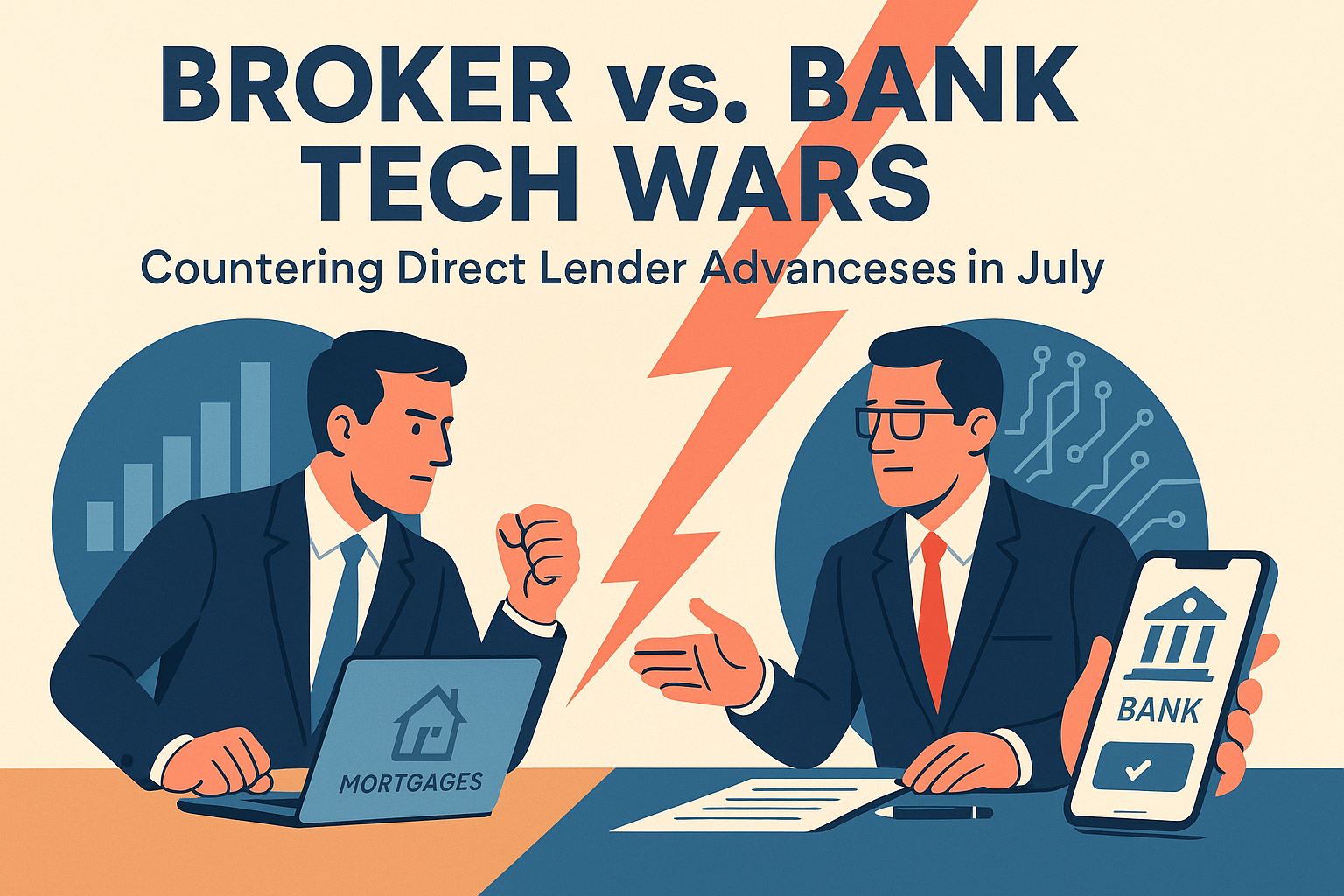Too Busy to Read? We’ve Got You.
Get this blog post’s insights delivered in a quick audio format — all in under 10 minutes.
This audio version covers: Diversification Blueprint: Commercial and Asset Finance
The 12% Growth Gap: Your Blueprint for Diversifying into Commercial and Asset Finance
Diversification into commercial and asset finance (CAF) has moved beyond a niche offering to become a critical strategy for Australian mortgage brokers seeking long-term resilience and revenue growth. Analysis of industry settlement data reveals a significant market inefficiency: while many broker networks report that commercial and asset finance comprises approximately 20% of the industry average for settlements, some residential-focused brokerages see this figure fall as low as 7.5%. This difference highlights a demonstrable **12.5% growth opportunity** waiting to be captured by brokers who strategically professionalise their service offering [Query].
Table of Contents
- 01. The Strategic Imperative: Why Commercial Diversification is Non-Negotiable
- 02. Goldmining Your Residential Book: The SME Audit Framework
- 03. The Regulatory and Credit Shift: Mastering Commercial Finance Foundations
- 04. Product Pathways and Lender Ecosystem
- 05. Execution: Cross-Selling and Conversation Frameworks
I. The Strategic Imperative: Why Commercial Diversification is Non-Negotiable
The Australian commercial lending landscape is already experiencing robust expansion, creating a clear mandate for broker involvement. Recent industry data confirms the settled value of commercial loans through brokers reached nearly $23 billion, marking a substantial 31.2% year-on-year growth.[1] This upward trajectory is evident in broker participation rates: the number of brokers actively writing commercial loans grew by over 24% year-on-year as of September 2024, with a record 7,000 brokers now accredited in this space.[1] Further highlighting this momentum, 37% of brokers reported writing commercial mortgages in the previous 12 months, with an additional 28% planning to enter the market shortly .
However, the sheer number of brokers reportedly entering the field (with over 31.54% writing commercial loans according to one report [2]) contrasts sharply with the low network settlement averages cited above. This disparity suggests the existence of a substantial professionalization gap. Many brokers may only be dipping their toes into the commercial sector, handling low-value or sporadic deals, thereby failing to capture the full economic potential. This environment demands that brokerages act swiftly to acquire the necessary skillsets and platform support before diversification becomes a mere industry prerequisite, rather than a crucial competitive advantage.[3] Major aggregators have already recognized this necessity, adapting their systems to integrate commercial capabilities to support their networks.[3]
B. Beyond the Margin: Three Core Advantages of Diversification
Diversification delivers benefits that extend well beyond simple revenue addition, fundamentally altering the broker’s business model.
1. Revenue Resilience and Counter-Cyclical Stability
The capacity to offer commercial finance provides a crucial hedge against volatility in the residential market [Query]. When residential lending cycles slow due to high interest rates or broader economic tightening, the commercial and asset finance sectors often remain active. Businesses frequently require capital for expansion, equipment, or managing cash flow regardless of housing market fluctuations, providing brokers with a reliable, counter-cyclical revenue stream that significantly enhances overall business stability [Query].
2. Superior Earnings Potential
Commercial finance frequently offers a more lucrative earnings profile. Unlike the standardized upfront commission structures common in residential lending (typically 0.65% to 0.7% plus GST) , commercial fees are often higher and negotiated based on the complexity, size, and difficulty of the transaction . Furthermore, certain commercial products, such as business lines of credit offered by specialist non-bank lenders, can generate ongoing trail income and repeat commissions, which compounds the broker’s lifetime earnings from that client relationship .
3. Enhanced Client Lifetime Value (CLV): The Holistic Partner Model
By catering to a client’s commercial needs—whether funding business real estate, securing equipment, or facilitating expansion—the broker fundamentally shifts their role from a transactional service provider to a lifelong financial partner [Query]. As one industry executive noted, high-performing brokers aim to be the customer’s ultimate destination for all financial needs, encompassing everything from a car loan to purchasing a factory.[3] By providing ongoing value through commercial advice, the broker ensures the residential relationship is also secured, creating a powerful retention barrier against competitors.[4]
II. Goldmining Your Residential Book: The SME Audit Framework
The most logical and profitable source of new commercial business is the broker’s existing client base. Many residential mortgage clients are self-employed individuals or small business owners whose commercial funding needs remain entirely unmet by their current broker [Query]. Systematically auditing the residential book to identify these “accidental SMEs” is the foundational step in the diversification blueprint.
A. Phase 1: Defining the Prime Commercial Lead
The key is identifying clients who run businesses requiring funding for core operations, expansion, or asset acquisition.[5] This includes clients needing capital for commercial property, equipment (asset finance), or general working capital. A subtle but important subset is Australian SMEs pursuing global opportunities, who often require specialized finance (such as export finance) that traditional domestic banks may be unable to support, providing a unique opportunity for an informed broker to step in.[1]
B. Phase 2: CRM Mastery and Data Segmentation
Effective client data mining is crucial and requires moving beyond basic contact management to capture financial structural indicators.[6] Brokers must configure their Customer Relationship Management (CRM) systems to flag specific data fields that indicate commercial needs:
- **Employment Status and Entity Type:** Flag all clients identified as self-employed, directors, or shareholders. Capturing the exact legal structure—whether a Sole Trader, Partnership, Trust, or Pty Ltd—is vital.
- **Income Documentation:** Note if the original residential loan required any form of Alt-Doc or Low-Doc submission, as this is a strong sign of non-standard, business-derived income streams.[7]
- **Asset Listings & Trade Alerts:** Review liability statements or file notes for existing chattel mortgages or equipment loans, which signal capital expenditure history. Utilising the CRM for automated property equity updates helps maintain consistent contact and actively surfaces new business by tracking key data points.[8]
CRM Data Fields for SME Identification
| Data Field Category | Residential Broker Data Point | Commercial Lead Indicator |
|---|---|---|
| Employment/Income | Self-employed, Director/Shareholder, Trust/Pty Ltd names | ABN status, Entity structure, use of Alt-Doc/Low-Doc historical loans |
| Loan Purpose History | Debt consolidation, refinances | Business-related debt on liability statements, specific mention of working capital needs |
| Asset Details | Existing vehicles, equipment listings | Chattel mortgages, existing equipment loans, or recent large capital expenditure [7, 9] |
| Communication History | Inquiries about tax deductions, depreciation, or expansion plans | High-engagement on economic updates, low-engagement on simple residential topics [8] |
C. The Four-Step Client Audit Checklist
Brokerages can implement this practical, four-step framework immediately:
- **Filter and Rank:** Filter the entire client book based on the data fields above (“Self-Employed” or “Director/Owner”). Rank these clients based on the *date of last meaningful contact* and their *current estimated equity position* (which may generate automated trade alerts) .
- **Profile and Gap Analysis:** Review the top 50 ranked clients to understand their industry, operational footprint, and likely financial needs. What major capital expenditures might they need? What financial products (like equipment finance or working capital) are likely missing from their current portfolio? [10]
- **Skill Assessment and Partner Identification:** Assess the brokerage’s current commercial accreditation and panel access. For deals exceeding current in-house expertise, identify specialist commercial brokers or specific non-bank lenders who can manage the transaction .
- **Action Plan:** Develop a tailored communication strategy for the top 20 identified prospects. The focus should be on scheduling a **”Business Financial Health Check”** to review growth strategies, rather than simply refinancing their home loan.[11]
III. The Regulatory and Credit Shift: Mastering Commercial Finance Foundations
A successful transition into commercial finance requires a fundamental understanding of the regulatory and credit assessment differences that separate business lending from residential mortgages.
A. Navigating the Compliance Divide: NCCP vs. Non-NCCP Lending
Residential lending is governed by the stringent National Consumer Credit Protection Act 2009 (NCCP), which applies when credit is provided wholly or predominantly for personal, household, or residential investment purposes.[5] Crucially, loans provided for business purposes, commercial property acquisition, or equipment finance generally fall outside the NCCP framework.[5] This means the strict application of Responsible Lending Obligations (RPL) does not apply in the commercial space.[12]
While this difference affords greater regulatory freedom, it demands heightened professional scrutiny. Commercial finance remains under the umbrella of ASIC oversight through the Corporations Act 2001.[13, 14] Key focus areas include rigorous **Due Diligence**, which requires thorough investigation of a business’s financial health and operational stability. The high rate of collapses among Australian construction firms, for example, emphasizes the necessity of adequate due diligence in this sector.[13] Brokers must also be aware that regulatory changes, such as the Design and Distribution Obligations (DDO), influence how commercial financial products are marketed and sold to ensure suitability for the target market.[13]
B. The Five C’s of Commercial Credit: A Broker’s Deep Dive
Residential credit assessment primarily focuses on the individual borrower’s capacity (income) and credit history.[15] Commercial lenders, however, rely on a comprehensive framework known as the “Five C’s of Credit” to determine business viability and estimate the risk of default.[16, 17] A mortgage broker must internalize these five points:
- **Character:** The reputation, experience, and expertise of the business owners and management team, including their history of repaying debt.[17]
- **Capacity:** The ability of the business to generate sufficient cash flow to service and repay the loan. This requires detailed financial statement analysis (Profit & Loss and Working Capital health).[17]
- **Capital:** The amount of personal funds or equity the owner has invested in the business, demonstrating “skin in the game”.[17]
- **Collateral:** The assets (commercial property, equipment) offered as security for the loan.[17] Commercial loans often rely heavily on collateral and maintain lower Loan-to-Value Ratios (LVRs)—typically 50% to 80%.[18]
- **Conditions:** The purpose of the loan, the repayment terms, and the broader economic and industry conditions affecting the business’s success.[17]
The analysis of commercial finance reveals a clear risk profile disparity: commercial loans generally command higher interest rates than residential loans because commercial properties and businesses are inherently more susceptible to market fluctuations and economic risks . Consequently, the broker’s role shifts from a simple capacity calculator to a sophisticated business advocate. Successful commercial submissions require brokers to master “storytelling,” articulating the business strategy and management expertise clearly to the lender to build a compelling case.[2]
Key Differences: Residential vs. Commercial Credit Assessment
| Assessment Factor | Residential Lending (NCCP) | Commercial/Asset Finance (Non-NCCP) |
|---|---|---|
| Primary Focus | Borrower’s personal income and servicing capacity [15] | Business Cash Flow, Profitability (P&L), and Balance Sheet Health [15] |
| Regulatory Framework | ASIC’s Responsible Lending Obligations (RPL) via NCCP [5] | Corporations Act 2001, PPSA, and rigorous Due Diligence [13] |
| LVR Expectations | Up to 95% (with LMI possible) [18] | Typically 50% to 80% (LMI often unavailable) [18] |
| Risk & Rates | Lower risk, generally lower interest rates | Higher risk (market/tenant fluctuations), generally higher rates |
C. Upskilling and Accreditation Pathways
Bridging the knowledge gap is essential. While qualifications like the Certificate IV in Finance and Mortgage Broking provide a foundation , specialization is necessary. Industry bodies provide dedicated workshops focusing on commercial foundations, financial statement analysis, and enhancing submission quality.[2, 19] Brokers should actively leverage aggregator support and accreditation pathways to gain necessary commercial expertise and access expanded lender panels .
IV. Product Pathways and Lender Ecosystem
A. Commercial Real Estate Finance
Commercial real estate finance is utilized for income-generating properties such as retail spaces, offices, and industrial sites.[20] Unlike residential assessment, the primary lending evaluation here is heavily focused on the property’s potential to generate income, measured by factors like lease strength and occupancy rates.[15] Brokers must understand that commercial loan structures are often more complex, potentially involving interest-only periods or large balloon payments, which contrasts with typical residential amortization schedules.[20]
B. Asset Finance and Leasing
Asset finance is currently one of the fastest-growing financial products in Australia, serving as a critical tool for business expansion through the purchase of equipment.[7] These products, which include Hire Purchase, Finance Leases, and Chattel Mortgages, cover everything from passenger cars to heavy industrial machinery, agricultural equipment, and manufacturing assets.[7, 9]
The core value proposition of asset finance is cash flow preservation. Many asset finance options allow approved customers to avoid paying a deposit and use the asset itself as security.[7, 9] Brokers must market these products not merely as ‘debt’ but as ‘growth enablement’ tools, allowing the SME client to acquire necessary assets without crippling their operational liquidity.
C. Business Working Capital and Cash Flow Solutions
For businesses requiring rapid financing or flexible access to liquidity, specialized working capital solutions are essential. Non-bank and specialist lenders often provide unsecured business loans or lines of credit, sometimes offering up to $500,000 to $750,000 . Companies like Lumi and ScotPac prioritize speed and flexibility, frequently providing near-instant credit decisions and same-day funding . Brokers benefit directly from this segment, with business lines of credit offering the potential for ongoing trail income based on usage .
D. Leveraging Non-Bank and Specialist Lenders
To effectively serve the diverse needs of SMEs, brokers must leverage a broad lender ecosystem. Non-bank lenders are essential partners, often providing superior flexibility, quicker decision-making, and fewer rigid loan conditions compared to larger banks . Crucially, many non-bank offerings do not require real estate as security, which is a significant advantage for fast-growing SMEs that lack commercial property assets . Strategic partnerships with specialist platforms and lenders (such as Valiant Finance, which provides access to over 80 lenders) are necessary to access competitive deals and capital across complex commercial scenarios .
V. Execution: Cross-Selling and Conversation Frameworks
A. Timing and Positioning: The Value Proposition Shift
The ideal moment to introduce commercial finance is not during the high-stress residential settlement phase, but rather immediately post-closing or during structured annual financial reviews. This intentional delay allows the broker to position the conversation as a proactive “Financial Health Check”.[4] The language must shift away from discussing loan rates toward focusing on how the broker can optimize the client’s overall financial health, maximizing *growth, cash flow, and financial security*.[11]
B. Conversation Scripts for Warm SME Leads
Structured, data-informed conversation openers demonstrate relevance and expertise:
Review and Retention Opener
“Now that your home loan is settled, I wanted to discuss how we can structure your business finances to mirror the security we’ve achieved here. What’s your biggest challenge right now when it comes to financing future expansion or equipment needs?” [11]
Asset Upgrade Prompt
“My system flagged that your current business vehicle/equipment loan is nearing maturity. We can quickly review options for upgrading your assets, potentially utilizing flexible structures that preserve your cash flow. Is the end-of-financial-year upgrade on your mind?”
The Holistic Partner Close
“My goal is to be your single destination for *all* financial needs—from buying a home to acquiring a factory or fleet. [3] By staying across your residential and business portfolios, we ensure nothing falls through the cracks, allowing you to focus purely on running your business.”
C. Building Strategic Referral Networks
High-quality commercial business frequently originates from strategic referral partners, specifically accountants and business coaches. These partners require brokers who are not just product facilitators but competent executors of complex commercial deals . As highlighted by industry education, high-quality loan submissions—demonstrating mastery of the Five C’s and clear “storytelling”—are paramount.[2]
Conclusion and Broker Call-to-Action
The diversification into commercial and asset finance represents the definitive strategy for enhancing broker resilience, increasing average revenue per client, and securing long-term business growth. The market data unequivocally confirms the existence of a substantial, addressable **12% growth gap**, currently under-served by the majority of residential-focused brokers.
By internalizing the foundational differences in commercial credit assessment (the Five C’s), leveraging proprietary client data, and strategically engaging the specialist lending ecosystem, brokers can transition from being transactional providers to invaluable, holistic financial partners.
Your Broker Times Action Checklist
- **Audit Your Book Today:** Implement the Four-Step Client Audit Checklist to systematically identify the SME clients currently hidden within your residential portfolio .
- **Commit to Specialized Education:** Seek out commercial and asset finance training to strengthen skills in financial statement analysis and credit structuring .
- **Engage Your Aggregator and Specialists:** Secure access to non-bank and specialist lender panels, which offer the speed and unique products necessary to service complex commercial needs .






